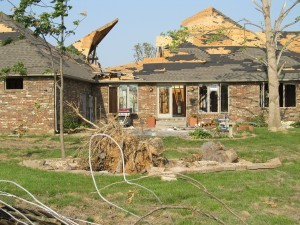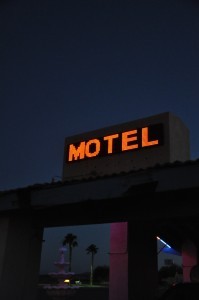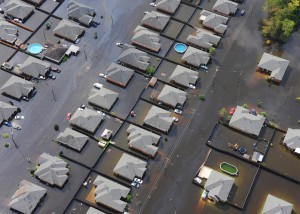Homeowners Insurance Coverage & 4 Common Exceptions
Homeowners insurance makes sure that you and your family are protected in the event that your home or its contents are damaged.
 Most policies cover dangers like fire, wind, lightning, vandalism and theft. But homeowners should know what their policies do and do not cover—the answers may surprise you.
Most policies cover dangers like fire, wind, lightning, vandalism and theft. But homeowners should know what their policies do and do not cover—the answers may surprise you.
Homeowners Insurance Includes…
1) Your Home’s Structure
This section of your policy states what the insurance will pay for if your home is damaged or destroyed. If you’re purchasing homeowner’s insurance or changing your policy, it is important to make sure you will have enough to rebuild your home if disaster strikes.
Lenders in California require homebuyers to purchase a minimal level of “hazard insurance” before finalizing a mortgage, which covers unintentional damage or destruction by fire, smoke, wind, hail, theft, vandalism, or another similar event. Most policies cover your home’s detached or surrounding structures, like a gazebo, garage or storage shed.
2) Your Personal Belongings
Items in your home, including clothes, furniture, electronics, and other belongings can be covered by your homeowner’s insurance. Most providers offer coverage for 50-70% of the level of insurance you take out on your home’s structure.
3) Additional Living Expenses (ALE)
 If your home is damaged or destroyed by a disaster covered by insurance, this section covers the costs of living away from home, including hotel and restaurant bills, while your home is being rebuilt.
If your home is damaged or destroyed by a disaster covered by insurance, this section covers the costs of living away from home, including hotel and restaurant bills, while your home is being rebuilt.
ALE coverage varies by policy and provider, is usually limited, and is separate from the amount provided to restore or repair your home. If you have tenants, ALE can reimburse you for the rent that you would have collected if your home had not been damaged.
4) Liability Protection
Liability coverage pays for damage that you, family members or pets may cause to other people or their property, as well as court costs against lawsuits and court awards up to the policy’s limit. This policy does not cover your own property, however, or things like your family’s medical expenses.
4 Common Homeowners Insurance Exceptions
While the coverage above is important in case of a disaster, homeowners are often surprised to learn about the limits and exclusions included in their policy. The four hazards below are often left out of home insurance, and most homeowners don’t find out they aren’t covered until it’s too late.
After finishing the list below, check your homeowners insurance to see if you have the coverage you and your family need to be safe.
1) Flood
 Homeowners may assume that flood coverage is included in their insurance policy, but this is a common misconception, according to financial publisher Bankrate.
Homeowners may assume that flood coverage is included in their insurance policy, but this is a common misconception, according to financial publisher Bankrate.
Insurance agents do sell flood coverage, but that coverage is sold separately and underwritten by the National Flood Insurance Program, part of the Federal Emergency Management Agency (FEMA).
2) Mold
Despite the risks mold carries for home and homeowner alike, standard homeowners insurance usually limits or or omits mold coverage—although that doesn’t necessarily mean a mold-related claim will be denied.
Usually, if mold occurs because of an incident covered by insurance—a burst pipe, for example—remediation costs should be covered. If, however, the cause of the mold is neglected home maintenance—such as untreated water leaks or poor bathroom caulking—your insurance is likely to reject that claim.
Click here to learn more about the dangers of mold.
3) Termites
Termites cause about $5 billion in damages throughout the U.S. each year, according to the National Pest Management Association, but coverage for these costs is typically left out of standard home insurance policies.
Most insurance companies consider termites a maintenance issue, much like mold, which means that the responsibility belongs to the homeowner. To prevent termite damage, hire a good pest control service to inspect your home regularly.
4) Sewer backup
America’s aging sewer lines—some have been in place for more than a century—have been known to back up during rain storms, or degrade and overload because of too many connected houses. Some estimates show hundreds of thousands of sewer backups in the U.S. annually.
Despite this threat, common homeowners insurance policies do not include coverage for sewer backups. If you live in an old neighborhood or have concerns about the local sewer system, speak to your provider about adding coverage for this eventuality.
Sewer backup coverage usually requires a small increase in your bill, but it is a sound investment if your home is susceptible to the damage that a backup could cause.
Need help with an insurance restoration project?
As a preferred provider of commercial and residential restoration services, Cal-Best Construction knows how to work with your insurance and get your project done right. Contact us online or give us a call at 714.630.1180. We look forward to assisting you!
